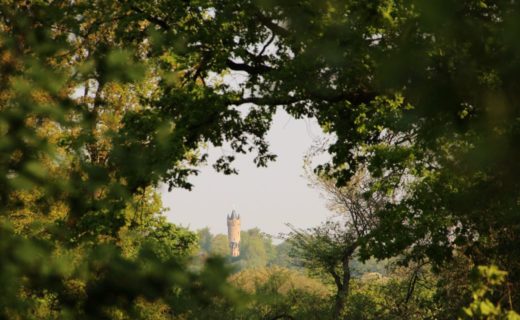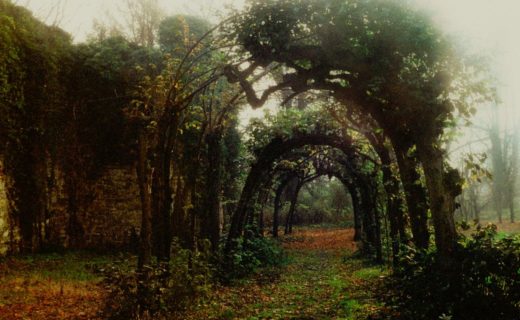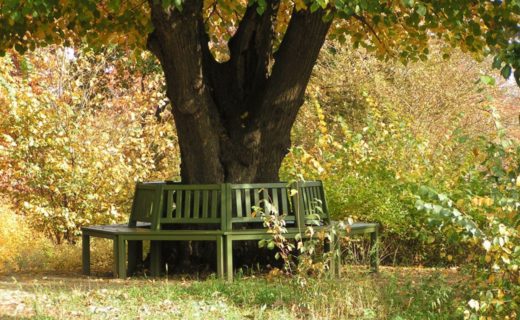Peter Joseph Lenné’s Picturesque Vistas
Frederick William IV’s dream of a Belvedere surrounded by extensive hanging gardens, open staircases and a cascading waterfall on the southern slope of the Pfingstberg remained unfulfilled – the king died before construction was completed. What remained was a large garden, whose design William I commissioned from Peter Joseph Lenné. Unfinished architectural aspirations were instead transformed into a park that also tied into the New Garden.
Creation of a New Garden Landscape
Subsequently, Lenné created romantic gardens. He began by surrounding the Belvedere and the Temple of Pomona with generous round, semicircular and rectangular lawn parterres. He also closed off the palace’s second courtyard with a semicircular pergola. This represented a clever solution for integrating the Temple of Pomona, which was not symmetrically aligned to the Belvedere.
A long serpentine path has wound down the hill ever since. At the foot of the hill, along the street called Große Weinmeisterstraße, there is a fruit meadow that was planted geometrically. Traversed by many winding paths, the park travels down to a small wooded area called the Mirbachwäldchen and continues from there into the New Garden.
Romantic Paintings amidst the Garden: The Vistas
To this day the picturesque vistas that Lenné created fascinate strollers on Pfingstberg above all else. Cut away from the dense tree population, they open up grand views to Peacock island, the Casino and Glienicke Palace, to Babelsberg Palace and the Flatow Tower, as well as to the former Heilig-Geist-Kirche (Church of the Holy Spirit), the Nikolaikirche (St. Nicholas’ Church) and to Potsdam’s city center. The viewer is given impressions mimicking Romantic paintings, brought to life by the fall of light and the season, and reminiscent of Caspar David Friedrich’s masterpieces.
Overgrowth
The Pfingstberg gardens were cared for until the outbreak of World War II. They survived the war largely undamaged but nevertheless began to grow wild after 1945. Due to the immediate proximity to the Soviet Military Camp No. 7 (Militärstädtchen Nr. 7), the Soviet garrisons and to the inner-German border following the division of Germany, the gardens became restricted terrain that was difficult to access. The pergolas and vistas were no longer maintained.
Restoration
When young Potsdamers began to commit themselves to saving the ensemble at the end of the 1980s, the grounds around the palace were first freed of brushwood and undergrowth, and the eastern lawn and paths were cleared. The garden was brought back to life, and, since 1995, has been restored from the ground up by the garden direction of the Stiftung Preußische Schlösser und Gärten Berlin-Brandenburg (SPSG ‒
Prussian Palaces and Gardens Foundation Berlin-Brandenburg). Today, Lenné Park is part of the UNESCO World Heritage.
Learn more about the history of Lenné Park in the permanent exhibition at the Belvedere.



